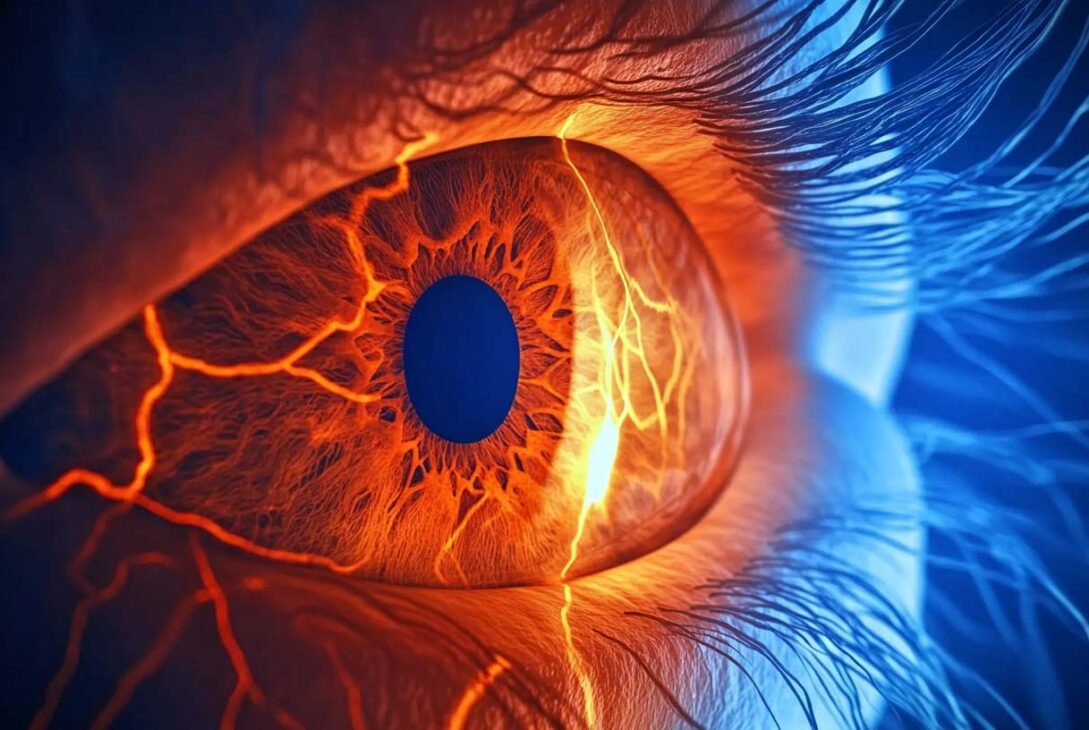Introduction to Delta-8 THC and Its Impact on Glaucoma
Glaucoma is a pressing concern for many, standing as one of the leading causes of blindness across the globe. Characterized primarily by elevated intraocular pressure (IOP), this condition poses a direct threat to the optic nerve and overall vision. Recent discussions have increasingly spotlighted a lesser-known cannabinoid, Delta-8 tetrahydrocannabinol (Delta-8 THC), as a potential player in managing the symptoms associated with glaucoma. This guide aims to unpack the details surrounding Delta-8 THC, its influence on ocular pressure, and its broader implications for vision and neuroprotection.
Understanding Delta-8 THC
At its core, Delta-8 THC is a variant of tetrahydrocannabinol, the compound commonly associated with the psychoactive effects of cannabis. While Delta-9 THC reigns as the most recognized form, Delta-8 offers a gentler euphoric experience while still retaining numerous medicinal properties like pain relief and appetite stimulation.
Mechanism of Action
Delta-8 THC operates within the framework of the endocannabinoid system (ECS)—a network regulating various physiological functions throughout the body. It primarily interacts with the CB1 receptors, pivotal for modulating several bodily functions, including mood and pain perception. Most notably, these receptors also play a critical role in regulating intraocular pressure, making Delta-8 THC a compelling candidate for glaucoma therapy.
Delta-8 THC and Intraocular Pressure
The relationship between Delta-8 THC and intraocular pressure has been the focus of several scientific inquiries.
Reducing IOP
Emerging research suggests that Delta-8 THC can effectively lower IOP, a vital aspect of preventing ocular nerve damage and subsequent vision loss. In studies involving animal models, Delta-8 THC was highlighted as one of the most effective cannabinoids for this purpose. Researchers observed that Delta-8 THC’s interaction with the CB1 receptors helped alleviate fluid pressure within the eye, an essential factor in managing glaucoma’s progression.
Comparative Effects with Other Cannabinoids
Comparing Delta-8 THC with its cannabinoid cousins sheds light on its unique advantages. While CBD has occasionally shown negligible effects or even slight elevation of IOP at higher doses, Delta-8 THC consistently showcases positive results in decreasing IOP. Delta-9 THC also has a commendable reputation for reducing pressure, but its more potent psychoactive effects may not be suitable for everyone. This distinguishing characteristic of Delta-8 THC offers an enticing pathway for those seeking relief without the pronounced high.
Delta-8 THC and Glaucoma Symptoms
Delta-8 THC’s usefulness extends beyond IOP modulation; it brings additional benefits that could ease the discomfort associated with glaucoma.
Pain Relief and Neuroprotection
Chronic pain is a common hurdle faced by glaucoma patients, frequently stemming from optic nerve damage. Delta-8 THC exhibits robust analgesic (pain-relieving) properties, making it a valuable ally in pain management. Additionally, its neuroprotective effects have the potential to mitigate further nerve damage, supporting the overall health of the eye and perhaps staving off the progression of the disease.
Anti-Inflammatory and Anti-Nausea Effects
Inflammation can exacerbate glaucoma, and here too, Delta-8 THC shows promise with its anti-inflammatory qualities. By reducing inflammation, it may help in lessening the burden on an already struggling eye. Furthermore, nausea and vomiting, which can accompany severe glaucoma symptoms, may be effectively managed with Delta-8 THC. Uniquely, it offers these benefits without the intense/high psychoactive effects that its Delta-9 counterpart may present.
Potential Side Effects and Considerations
Despite the optimistic outlook for Delta-8 THC, it is prudent to be aware of potential side effects and considerations.
Visual Side Effects
Some users have reported experiencing visual disturbances, such as visual snow syndrome (VSS), following Delta-8 THC consumption, though these occurrences are rare and often tied to high dosages or individual sensitivities. Awareness of one’s body’s responses is crucial when engaging with any form of THC.
Eye Health and Product Usage
When using Delta-8 THC, it’s crucial to avoid direct application to the eyes, as this could lead to irritation. Just as with any therapeutic substance, paying close attention to the strengths and dosages of Delta-8 THC products is vital to minimize unwanted effects.
Conclusion and Future Directions
The advent ofDelta-8 THC into the conversation surrounding glaucoma marks a significant step forward in exploring alternative treatment options. Its ability to lower intraocular pressure and alleviate associated symptoms provides a sense of hope for those grappling with this challenging condition. While further studies are needed to delve deeper into its long-term effects and mechanisms, the existing evidence strongly points toward Delta-8 THC’s potential as a formidable addition to the glaucoma treatment landscape.
Actionable Tips
- Consult a Healthcare Provider: As with any treatment, it’s essential to speak with a healthcare professional before incorporating Delta-8 THC, ensuring safety and suitability for your specific health profile.
- Choose the Right Product: Focus on high-quality Delta-8 THC products meant for oral consumption, steering clear of any direct eye applications.
- Monitor Dosage: Starting with low doses and gradually increasing them can facilitate finding the ideal therapeutic benefit while evading unwanted side effects.
- Stay Informed: Staying abreast of the latest research and clinical trials will help navigate the ever-evolving landscape of Delta-8 THC in the treatment of glaucoma.
Embracing Delta-8 THC as part of a more extensive management plan might offer patients substantial relief from glaucoma symptoms, ultimately fostering better vision and enhancing overall quality of life.
Keywords:
- Delta-8 THC
- Glaucoma
- Intraocular Pressure
- Vision
- Neuroprotection
Internal Links:
- Understanding the Endocannabinoid System and Its Role in Health
- The Difference Between Delta-8 and Delta-9 THC
- Managing Chronic Pain with Cannabinoids
External Links:
- National Academy of Sciences: Cannabis and Glaucoma
- American Academy of Ophthalmology: Glaucoma Treatment Options
- Peer-Reviewed Studies on Delta-8 THC and Glaucoma





















